According to legend, “the wise queen, ordering that fabric be made from silk threads, established an annual celebration during the removal of leaves from mulberry and feeding of worms. Making threads from cocoons quickly spread throughout the Middle Kingdom and came from there to Japan and then to southern and western Asia, i.e. India and Persia.” The Chinese carefully guarded their wealth, spread various legends about the appearance of sericulture and silk production and punished by death those who tried to give away their secret
In the 2nd-1st centuries BC, silk production moved from China to Central Asia, and from there it gradually and consistently spread to Turkestan, Bukhara, Hiva, Merv and Persia. In Persia, silkworm breeding was known in the 6th century, and in the 7th century, it was already common in Khorasan, Azerbaijan and Tabaristan. (3, p.138) Albanian historian Moses Kalankatuatsi (7th century) wrote in the “History of the Albanians”: “Located in the high mountains of the Caucasus, the country of Albania is enchanting and beautiful with many rich gifts of nature.
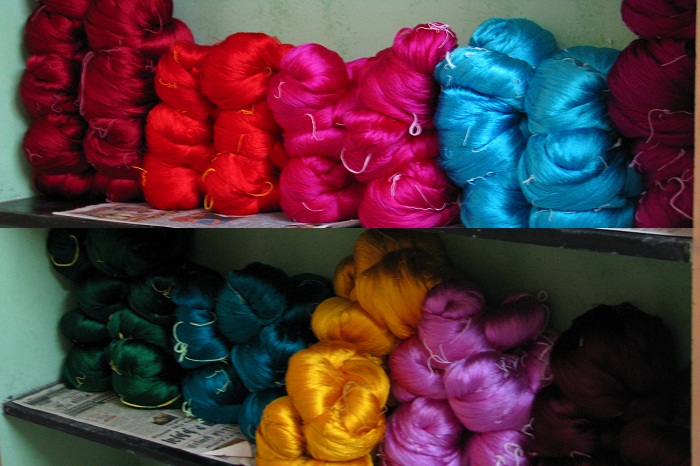
The Great River Kura flows quietly through it, bringing large and small fish, and empties into the Caspian Sea. Fields around it abound with bread and wine, oil and salt, silk, cotton and countless olive trees...” (2, p. 5) Some pre-revolutionary researchers of the history of agriculture in Azerbaijan, a number of works by Soviet historians and, finally, archaeological excavations carried out in the territory of Azerbaijan testify that the beginning of sericulture in Azerbaijan belongs to a much earlier period.
The earliest material on silk-weaving production in Azerbaijan was provided by finds made during excavations in Kultapa, which belong to the 4th-3rd millennia BC. Among the objects of the Eneolithic and Bronze Age from Mingachevir, there are fragments of fabrics and clay fortress walls. They show that the population living here in the 3rd millennium BC was familiar with the weaving industry, and in the 1st millennium BC, weaving, along with pottery and metal processing, was one of the major crafts in Azerbaijan. (4, pp.81-82) In Mingachevir, the oldest fabrics were made from flax, and in the 2nd-1st centuries BC and in the 1st-2nd centuries AD – from hemp, and they also started to use silk, cotton and wool.
The ancient Greek historian Herodotus said that “the garments of the Medes”, people who lived in the Caspian Gates (Media is a state which existed from the 70s of the 7th century to 550 BC and included the territory of Azerbaijan), were from silk fabrics. He also wrote: “They - the Persians – wear even Median clothes, considering them more beautiful than their own.” “... The Mil steppe has long been one of the richest cultural centers. For example, in 320 BC, silk was exported to many countries from Bilkhan (Beylagan), which was part of the Albanian principality.” In the first few centuries AD, sericulture was widespread almost everywhere in Khorasan, Azerbaijan, Tabaristan and other parts of the Persian Empire. This report is confirmed by the results of the Mingachevir archaeological excavations where silk, wool and cotton yarns produced in Azerbaijan itself were found in catacombs and tombs.
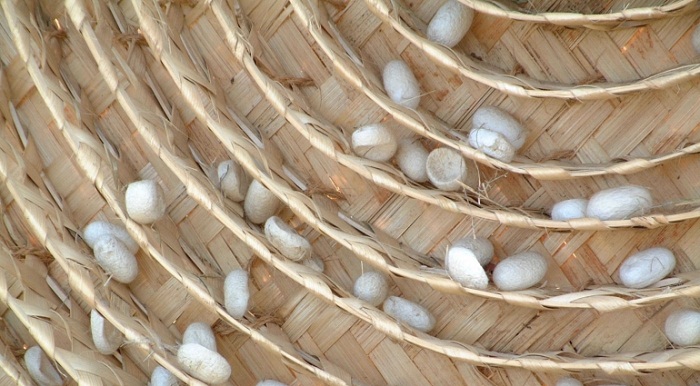
Albanian historian Moses Kalankatuatsi wrote: “Blessed and beautiful is the country of Agvans ... On the banks of the Kura, mulberry, which provided raw material for the production of silk fabrics, rows in abundance.” A number of Arab historians, geographers and travelers provide valuable information about the state of the economy, agriculture, and the development of trade and commerce in the 9th-10th centuries. They suggest that silkworm breeding was widespread in Azerbaijan in the 9th-10th centuries. The populations of Barda, Sheki, Ganja and some other regions of Azerbaijan were mainly engaged in sericulture.
According to the Arab traveler and writer al-Istahri, a lot of silk was exported to Persia and Khuzestan from Barda. (8, p.7-8) Another Arab geographer Ibn Hawqal recorded: “In Barda, a variety of things are made of silk ...the thing is that mulberry trees are public: they do not have owners, they are not sold or bought.” (9) In the 12th century, horticulture, cotton-growing and silk production developed even further in Azerbaijan.
In his works, the great poet Nizami Ganjavi repeatedly mentions silk and admires silk fabrics made by Azerbaijani craftsmen. In the poem “Iskandarnameh”, in its first part - “Sharaf-nameh”, speaking of Barda, Nizami writes: “For me, on this silk, o the crown of the universe, There is nothing dearer than your outlines.”
“She ordered to bring as quickly as possible Silk on which the faces of kings are drawn.” (10, p.227, 230) Silk was a precious item in trade. In 1221, during the first campaign of the Mongols against Azerbaijan, the city of Ganja paid them off with silk fabrics. (11, p.706) At the end of the 13th and early 14th centuries, silk and silk fabrics attracted the attention of European travelers visiting Azerbaijan. There is evidence that Genoese and Venetian merchants, whose ships sailed in the Black Sea, had their own fleet in the Caspian Sea. Venetian Marco Polo reported in 1293 that Genoese people, who brought silk called Gelli (Gilan), began to sail in the Caspian Sea.
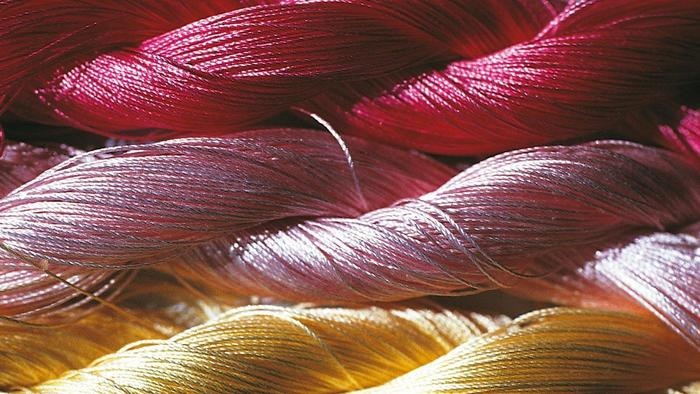
Castilian ambassador Ruy Gonzalez de Clavijo admired the beauty and quality of silk fabrics manufactured in Barda, Tabriz, Shamakhi and other cities of Azerbaijan. He recorded: “... It is a land where a lot of silk is made, and merchants come there for silk even from Genoa and Venice.” (12, p.89) Venetian traveler Ambrogio Contarini, who arrived in Shamakhi in 1465, familiarized himself with the technique of making silk and silk fabrics. “In this city, Shamakhi, they make silk known to us under the name of Talaman (Talaman-Deyleman; Deylem is the mountainous part of Gilan), and they also make different silk fabrics, mostly smooth and very sturdy.” (12, p.91)
According to Contarini, silk from Shirvan was exchanged by Russian merchants for furs, honey and wax. Valuable information about the development of sericulture in Shirvan is also provided by Venetian Giosafat Barbaro, who spent a long time at the court of Uzun Hasan.
In 1465, Shirvanshah Farrukh Yasar sent an embassy with gifts led by Hasan Bey to Tsar Ivan III in Moscow to establish friendly and commercial relations between the Moscow State and Shirvan. In response, Vasiliy Papin came to Shamakhi from Ivan III with rich gifts. (13, p.194) In 1466, Tver merchant Afanasiy Nikitin and his friends, Tver merchants, built two ships, loaded goods on them and went down the Volga to Shamakhi. (14, p.33)
In the 16th century, the economic life of Azerbaijan revived. This period in the history of Azerbaijan is known for events associated with the formation and consolidation of the Azerbaijani Safavid state, which became a powerful state in a short time. Raw silk and silk products accounted for 70 per cent of goods exported from the Safavid state. Suffice it to say that at the end of the 16th century, up to 100,000 pounds of silk were exported from Shirvan each year. (15, p.243)
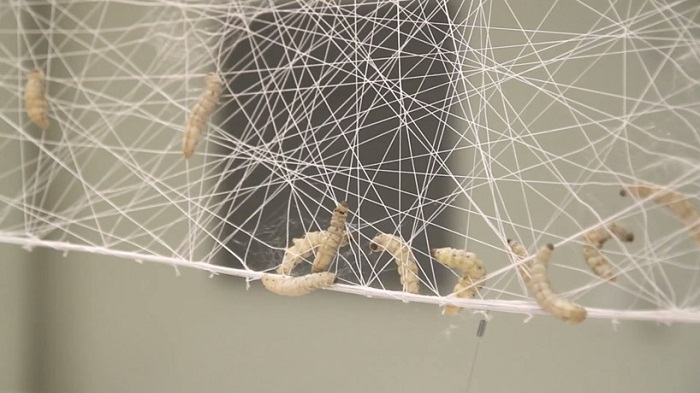
The Western European traveler Johann Schiltberger, speaking about the productivity of the regions of Shirvan and Sheki, pointed out that Shirvan produced “the best silk” and this raw silk was used for producing good fabrics
in Damascus, Kashan ... The silk was also exported to Venice, where “excellent velvet” was woven from it. (12,p.91)
Goods were brought from India to Europe from ancient times through overland caravan trade routes, but in the 16th century, the so-called Volga-Caspian route was developed. On this route, the Caspian region of Shirvan
and Gilan, which produces a lot of silk, were of great importance. This enhanced the importance of Baku as an important port in silk trade.
In 1453, after the capture of Constantinople by Mehmet II the Conqueror, the Ottoman state was established in the former Byzantine Empire. European merchants were looking for new ways to trade with the East, bypassing the Ottoman Empire. In this regard, the main route from Europe to Azerbaijan and Iran moved to the north and passed through Russia. From that time, European travelers arrived in Shirvan, using the Volga Caspian route. Major transit points for trade in Shirvan were Derbent and Baku.
The importance of Baku as a port can be seen from the fact that beginning from the 15th century, we see various medieval travelers using the name of the Baku Sea, by which they called the Caspian Sea (Clavijo, Barbaro, Contarini, Angiolello).

A lot of valuable and interesting things are reported by 17th century Turkish traveler Evliya Celebi on the economic life of Tabriz, Shamakhi, Ganja, Baku, Nakhchivan, Mingachevir and other cities of Azerbaijan. In his notes, Evliya Celebi dwells in detail on the cultivation in the vicinity of Baku of mulberry trees, whose leaves fed silkworms, which is proved by the fact that villages of Absheron engaged in sericulture. Celebi also reports on the export of silk from Baku. More recent sources of the early 19th century directly point to the collection of silk in the Baku region. (12, p.205)
German traveler Adam O’leary wrote that in the 1630s, Azerbaijan harvested from 10 to 20 thousand bales of raw silk every year, of which Shirvan gave 3,000 and Karabakh – 2,000 bales. (16, p.48)
Artemiy Volynskiy, who was sent to the Safavid state in 1715 as an ambassador of the Russian state, indicates that in Shirvan there is a special interest in sericulture, and in the Kura River basin there are no villages that have no
workshops for the production of silk. (17, p.11-12)
English merchant and traveler George Foster, having visited the north-eastern part of Azerbaijan, noted that “Shirvan produces large amounts of silk. Shirvanians annually export 400 tons of silk to the foreign market”. (18, p.136) Another source belonging to the 1730-40s indicates hat in Shamakhi there are 650 looms and up to 129 silkweaving establishments. (19, p.53, 20, p.788) S. Bronevskiy, noting the presence of a large amount of high-quality silk in Sheki, recorded: “Agriculture - the main industry of residents of the Sheki khanate – consists in silkworm production… Silk prepared here in great abundance is not inferior to Shamakhi silk by its quality.”
(21, p.440-441) Azerbaijani raw silk was of great importance for the Russian manufacturing industry.
At the end of the 18th century, Shamakhi alone almost entirely supplied raw silk to the textile enterprises of Moscow. According to some sources, in the spring of 1767, 2,000 pounds of raw silk were exported from Baku to Astrakhan by sea, and according to another official report - up to 3,000 pounds. (18, p.422, 423) In the 17th-18th centuries, Baku was the best port on the Caspian Sea in transit international trade in silk with Shamakhi and other cities. “... This harbor is undoubtedly one of the most convenient for trading on the whole of the Caspian Sea, especially with Shamakhi, which is considered the largest and most populous city in this region and is only three days’ journey from here.
In Shamakhi there are factories of all Eastern peoples, and for this reason, this city is visited from all countries...” (12,p.218) This is how Englishman P. A. Bruce, who visited Baku in 1723, described the Baku harbor in his records. A colony of Indian merchants, who had large capital, lived in Baku. They had a caravanserai near the harbor, where they lived. In 1683, Baku was visited by scientist and traveler Engelbert Kaempfer who left interesting information. He mentions this caravanserai, where he met Hindu traders from the “Multani” tribe. Together with Azerbaijani merchants, Indian merchants exported up to 400 bales of raw silk per year via Baku to Astrakhan.
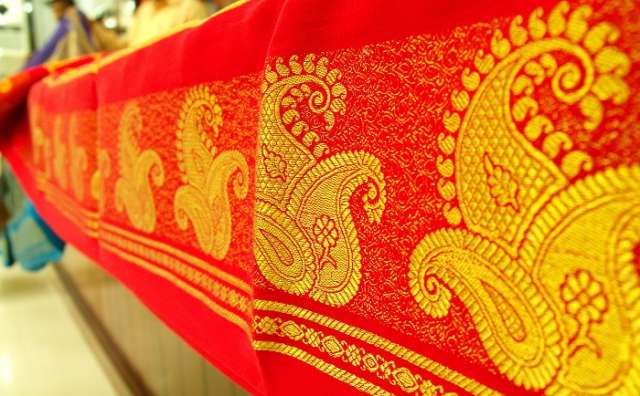
From India the merchants brought various spices, woolen fabrics produced mainly in Kashmir and widespread in the East, the so-called “tirma”, which were worth their weight in gold, and silk fabrics embroidered with gold and silver threads (22). According to the traveler Barrow, in the part of Shirvan he visited, it was impossible to buy any valuable goods except for silk. In addition to these travelers, at the end of the 16th century, Azerbaijan was also visited by others such as Anthony Shirley and Perry Williams.
Traveler Tavernier believed that Ardabil in the 1560s was considered one of the greatest cities of the Safavid Empire, where, among other things, brisk trade in silk was conducted. This was facilitated, as the traveler says, by the city’s location between Gilan and Shirvan, which produces a huge amount of raw silk, one of the main items of international trade.
Throughout the 17th century, relations between the Russian state and Safavid Iran were peaceful and based mainly on common economic interests. In several years,Tikhonov and Bukharov (1613), Leontyev and Timofeyev(1616), Boryatinskiy (1618) and other ambassadors were sent to Iran. Later the Safavid state was visited by F. A. Kotov (1623), Artemiy Sukhanov and others. (23, p.21) Trade relations between Azerbaijan and Russia, established in the 16th century, greatly expanded in the 17th century and in the first half of the 18th century under Tsars Alexis and Peter I. Items of trade were Baku oil, salt, saffron, raw silk, silk and cotton fabrics, rugs, camel wool, leather, livestock, fish, caviar, fruit, bread, copper utensils, weapons and other products.
Russia, which expanded its trade with Iran and Azerbaijan in the 17th- early 18th centuries, needed a convenient port for international transit silk trade in the Caspian Sea, which was Baku. This was one of the reasons for the occupation of Baku by Peter I in 1723. In the same year, Peter I issued a special decree to establish trading companies of Russian merchants in Iran.
According to the British traveler and merchant James Spilman, who visited Iran and Azerbaijan in 1739, Russian merchants traded with Iran and Azerbaijan on the Caspian Sea via Astrakhan. Spilman speaks of vessels that had arrived in Astrakhan at this time. On one of them, there were 200 bales of goods destined for Russia. In addition, there was silk belonging to English merchants (Spilman and his companion). Spilman’s report shows that the export of silk was insignificant at that time.
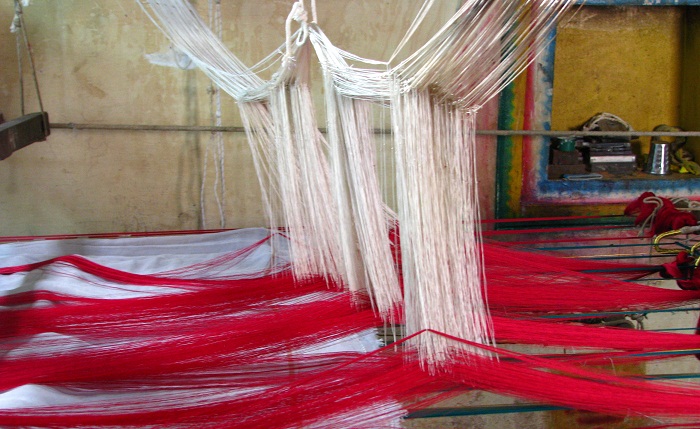
In the last decades of the 18th century, the Russian silk industry was booming. Russian merchants needed markets for the purchase of raw materials such as raw silk, wool, cotton, as well as markets for domestic products.
Economic relations between Russia and Azerbaijan via Baku and Kizlyar were widely developed. The development of Russian-Azerbaijani trade through Baku at that time was also furthered by the pro-Russian orientation of Fatali Khan, who patronized Russian merchants. Silk was transported to Astrakhan from Baku, Sheki and Derbent, often as contraband. Weaving in Azerbaijan in the 18th-19th centuries developed in three separate areas: cotton - bezzaz lig, silk weaving - “ipak tokhuma” and wool-weaving - sharbaflig, yun tokhujulugu.
English traveler Forster, who visited Baku, noted the major role of Baku as the main port in silk trade and recorded: “For a long time it was thought that the silk imported into Europe from Turkey came from the Ottoman Empire, but a deeper study of the trade of Persia shows that Turkish merchants go to Gilan and Shirvan, buy silk in large quantities, and then send it to Europe.”
According to him, Shirvan province produces a considerable amount of silk, 400 tons of which are annually transported to Astrakhan. Marshall von Bieberstein, who visited Baku in 1796, spoke of the city as the only large and convenient port on the Caspian Sea.
French traveler Guillaume-Antoine Olivier reports that Russians, who had their own factories in Baku, Salyan and Anzali in 1798, were engaged in trade. From these ports Russian merchants exported Gilan and Shirvan silk, cotton, rice, pure silk fabrics and silk belts embroidered with gold to Astrakhan. Russia also exported from Iran via Baku gum, which served for the manufacture of silk. English missionary M. Tooke, giving a description of Baku at the end of the 18th century, said that trade in Baku is more significant than in Derbent. Baku trades with Shamakhi, from where it receives raw silk and silk products.
In the 1830s, both government and commercial and industrial circles of Russia desired to start economic development of the South Caucasus and, in particular, Azerbaijan. In the 1840s and 1860s, the first attempts were made to introduce in Azerbaijani agriculture such valuable crops as indigo, sugar beet, tobacco and cotton, and efforts were made to improve the quality of mulberry.
(24, p.34) In 1836, the “Society for Spreading Sericulture and Trade Industry beyond the Caucasus” was created. At the head of this society were Count A. H. Benkendorf, Princes V. V. Dolgorukov, M. A. Dondukov-Korsakov and A. Y. Zhadovskiy. The 1850-60s were a “golden age for Caucasian silk production”. During these years, both production and export of silk from Azerbaijan to Russia continued to grow. Kavkaz newspaper wrote: “Shamakhi province alone provides almost half of the amount produced by the whole of France. The local population uses a lot of silk for themselves.”
Interesting facts about the development of sericulture in Azerbaijan were provided by F. Shimanovskiy, V. Geyevskiy and N. Rayko seconded to Baku in the middle of the 1880s. As a typical area of commercial farming, sericulture in Azerbaijan was “just one of the means to earn money”
irs-az.com
















































